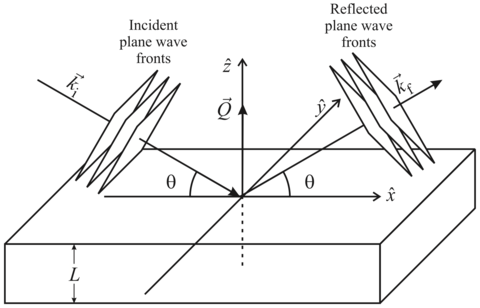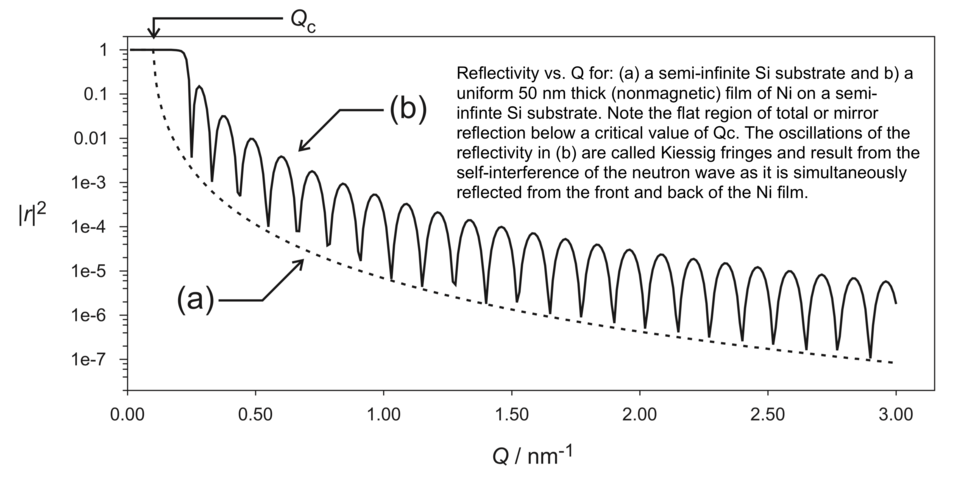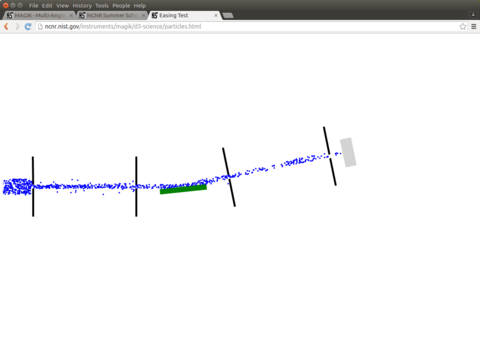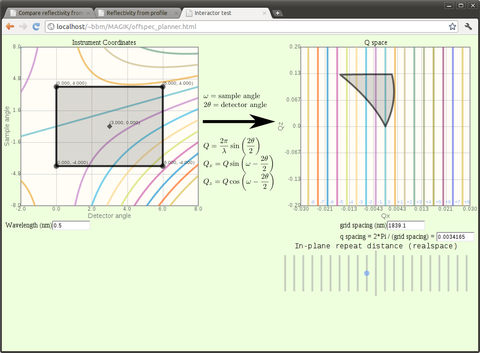Reflectometry

Credit:
Brian Kirby
Reflectometry uses neutrons scattered at grazing angles to probe the nuclear and magnetic composition of flat samples. Common types of materials studied include biological membranes, magnetic multilayers, and polymer films. The NCNR currently operates three reflectometers - PBR, MAGIK, and NG-7 - each specially configured for different types of research. Additionally, construction is underway on CANDOR, a revolutionary new white beam reflectometer. Please visit the instrument pages (linked at right) for specific information.

Credit:
Brian Kirby
Interactive online scattering demos
(requires Chrome, Firefox, or Safari)

Credit:
Brian Maranville
|

Credit:
Brian Maranville
|

Credit:
Brian Maranville
|
Contacts
-
(301) 975-8395
-
(301) 975-6034
Created April 17, 2017, Updated August 22, 2025

